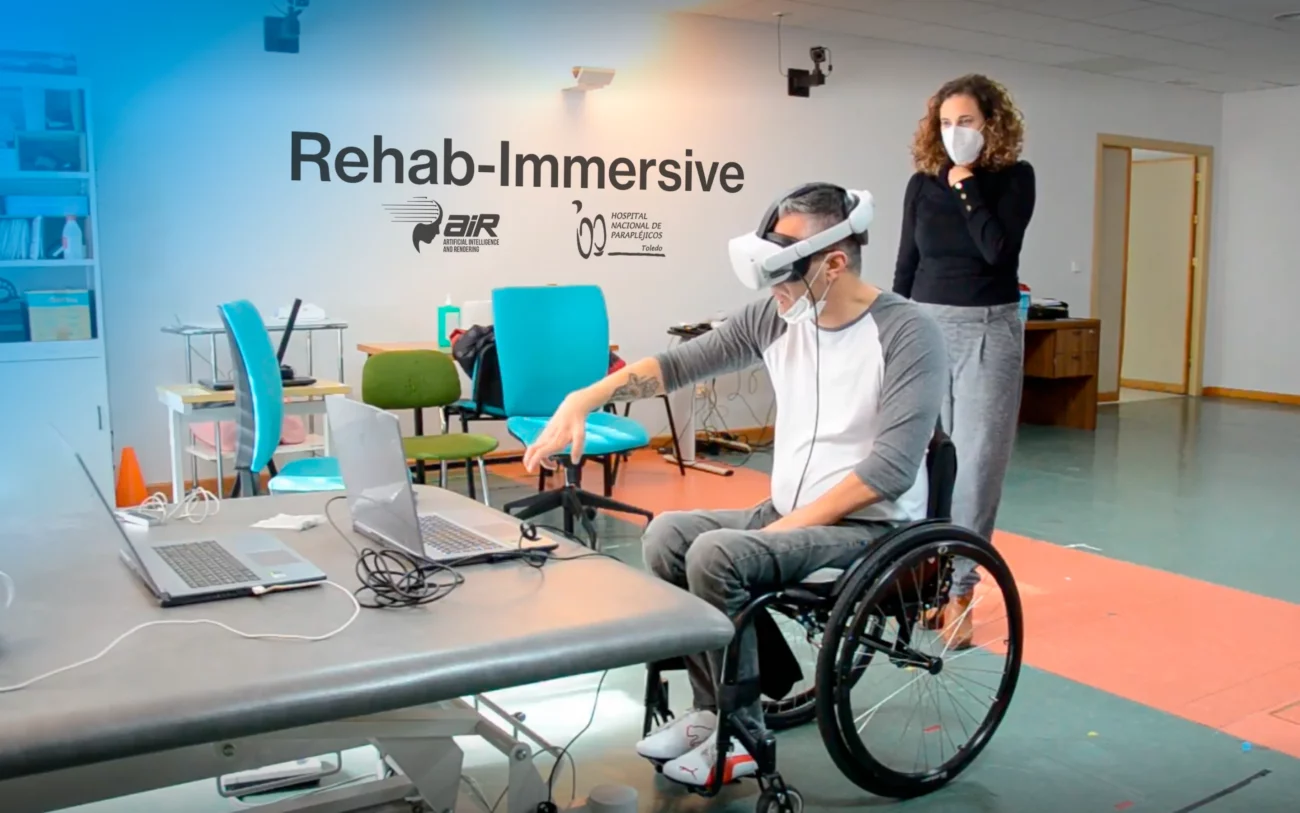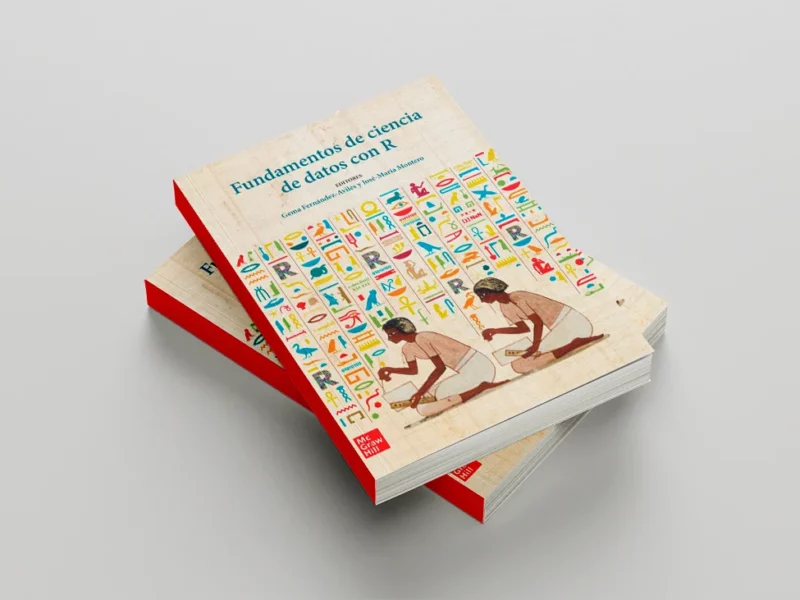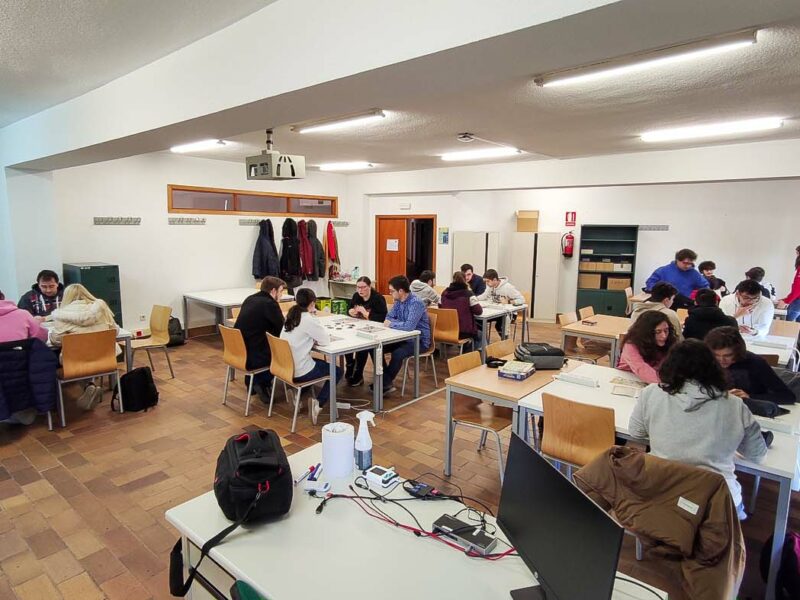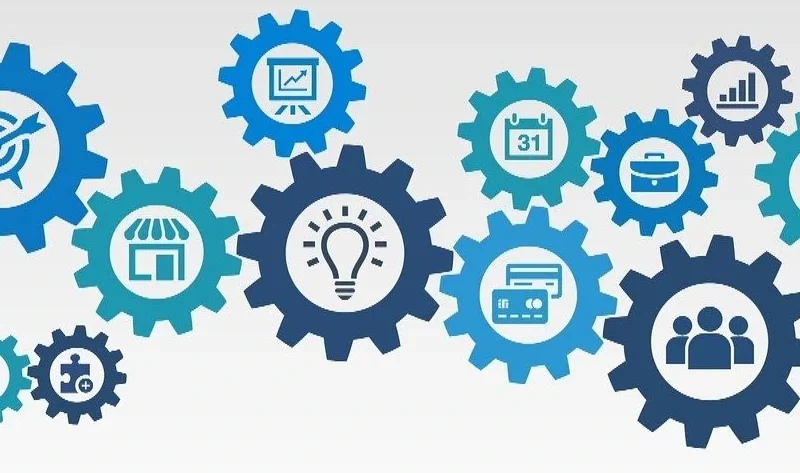VR as a complement to the rehabilitation of the upper limbs
The research group AIR, from the Higher School of Informatics and the University of Castilla-La Mancha, recently visited the National Hospital for Paraplegics of Toledo (HNPT) within the framework of the project Rehab-Immersive, in which a cloud platform based on Virtual Reality (VR) is developed for the rehabilitation of the upper limbs, financed by the Ministry of Science and Innovation (R&D Projects Research Challenges). On behalf of the AIR group, Vanesa Herrera Tirado (researcher hired in the project) and the main researchers Javier Albusac and Carlos González; on behalf of the Department of Biomechanics, Ana de los Reyes Guzman, as PI of the project on behalf of the HNPT.
The AIR group, in coordination with the Department of Biomechanics of the HNPT, designs and develops the functional core of the platform in the early phases of the project, which includes the interaction mechanisms between patients and virtual environments, as well as the measurement and analysis of kinematics. . The core of the developed software contemplates the physical limitations of each patient for the creation of adapted virtual environments, in order to adapt the rehabilitation exercises to each particular case.
In this line, satisfactory results were obtained during the day of experimentation scheduled with the HNPT. In the tests carried out, patients with cervical spinal cord injury were able to interact with the proposed virtual environments. However, these tests are very preliminary and there is still a long way to go, partly for the purpose of determining the target population in terms of the level and severity of the injury.
The results were obtained through the Box & Block test, a virtual app developed in the project and that makes use of the services provided by the core of the platform. This test measures the patient's dexterity with one of his hands, counting the number of blocks that he is able to move from one place to another in a limited time, as well as analyzing the movements carried out. Objective evaluation tests were carried out, with results close to those carried out with the physical Box & Block in the real world, such as the number of blocks moved correctly and the recognition of the patient's functional grips, in addition to receiving a feedback positive on the part of the patients in relation to the ease of use, feeling of immersion and motivation in the execution of the exercise.
Once part of the core of the platform has been developed, which facilitates the adapted interaction of patients with real environments, in the next phases the aim is to a) develop and integrate various VR-based applications for the rehabilitation of the upper limbs, b) integrate the platform into the cloud for distributed use and c) carry out a technical, functional and usability evaluation of the entire platform.
References in Press
- They investigate a virtual rehabilitation therapy for spinal cord injuries, The reason.
- Virtual reality to treat paraplegics: a decade of endless disruption in Toledo, invertia, Spanish
- The HNP and the UCLM work on an immersive virtual therapy to help rehabilitate the upper limbs, Infomédula – Foundation of the National Hospital for Paraplegics
- Government of Castile-La Mancha
- They work in an immersive virtual therapy to help rehabilitate the upper limbs, CLM24
- The Paraplegics Hospital and the UCLM work on an immersive virtual therapy to help rehabilitate the upper limbs, cmmedia.es
- The Paraplegics Hospital and the UCLM work on an immersive virtual therapy to help rehabilitate the upper limbs, the news about Castilla-La Mancha
- The Paraplegics Hospital and the UCLM work on an immersive virtual therapy to help rehabilitate the upper limbs, The newspaper of Castilla-La Mancha
- The Paraplegics Hospital and the UCLM work on an immersive virtual therapy to help rehabilitate the upper limbs, Liberal of Castilla-La Mancha
- The Hospital for Paraplegics and the UCLM They work in an immersive virtual therapy to help rehabilitate the upper limbs, Now CLM
- The Paraplegics Hospital and the UCLM work on an immersive virtual therapy to help rehabilitate the upper limbs, CLM objective
- The Paraplegics Hospital and the UCLM work on an immersive virtual therapy to help rehabilitate the upper limbs, Newscast of Castilla-La Mancha
- The Hospital for Paraplegics and the UCLM work on an immersive virtual therapy, Digitalspear
- The Hospital for Paraplegics and the UCLM work on an immersive virtual therapy, The DAY digital.es
- The Paraplegics Hospital and the UCLM work on an immersive virtual therapy to help rehabilitate the upper limbs, Digital Royal City
- The Paraplegics Hospital and the UCLM work on an immersive virtual therapy to help rehabilitate the upper limbs, Myciudadreal.es
- The Paraplegic Hospital of Toledo and the UCLM work on an immersive virtual therapy to help rehabilitate the upper limbs, the Region of Puertollano
- The Paraplegics Hospital and the UCLM work on an immersive virtual therapy to help rehabilitate the upper limbs, Information of Guadalajara
- The Paraplegics Hospital and the UCLM work on an immersive virtual therapy to help rehabilitate the upper limbs, notebooksmanchegos.com
- Paraplegic Hospital and UCLM work on an immersive virtual therapy to help rehabilitate upper limbs, Newsde.es











